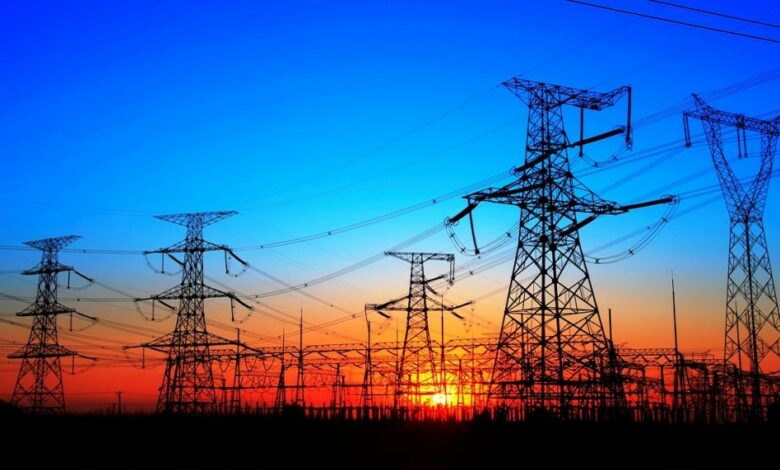Coal shortages and a heat wave are causing a power outage across India.
In October of last year, India experienced acute power outages due to a lack of coal at power facilities. After seven months, we're back to square one, with tales of coal-shortage-caused power disruptions affecting states throughout the country.

In October of last year, India experienced acute power outages due to a lack of coal at power facilities. After seven months, we’re back to square one, with tales of coal-shortage-caused power disruptions affecting states throughout the country. On the one hand, there is a rush to purchase high-priced coal and power on the markets. States such as Andhra Pradesh and Gujarat, on the other hand, have ordered industry to limit usage in order to control the power shortfall.
India’s electricity industry is projected to deteriorate as increasing power needs and an escalating heat wave put a strain on thermal power plants with limited coal supply. According to The Indian Express, the overall energy shortfall in India reached 623 million units (MU) over the previous week, surpassing the total deficit for the whole month of March.
As economic activity restarted following the COVID-induced lockdowns, the worldwide demand-supply mismatch for commodities such as coal intensified, resulting in a price increase. Geopolitical conflicts have aggravated the current problem. How can the Indian electricity system become more robust to future shocks in the face of such extraordinary volatility?
From the heat wave to depleted capacity, technical glitches to coal shortages, states such as Jharkhand, Rajasthan, Uttar Pradesh, Punjab, Maharashtra, Madhya Pradesh, Bihar, Andhra Pradesh, and the Union Territory of J & K are confronting several challenges in fulfilling rising demand for power.
On Tuesday, the greatest all-India power demand that was satisfied surpassed the 201 GW mark, as significant portions of the nation suffered from the searing heat. The day also had an 8.2 GW peak shortfall, with 120 million units of energy demand not supplied.
Coal prices have reached historic highs as a result of global supply interruptions caused by the Russia-Ukraine war. The cost of imported coal in India is predicted to be 35% higher in fiscal year 2022–23 than in the previous year. As a result, power companies paid a premium of up to 300 percent in March to obtain domestic spot coal supply.
Even as coal supplies at state thermal power plants declined, India experienced a surge in energy demand in March, the warmest month on record. This resulted in peak electricity consumption reaching 199 GW in the middle of March. The last week of March showed a 13% increase in demand over the previous year, accompanied by high electricity rates on the power market.
This has left distribution corporations (discoms) with two options: either get expensive electricity while risking revenue recovery, or resort to power rationing, as some states are doing.
The Ministry of Power has implemented a slew of steps to address the situation. This includes directives to guarantee maximum coal output at captive mines, coal rationing to non-power sectors, and a Rs 12 per unit price restriction on electricity supplied on exchanges. However, more has to be done to strengthen the sector’s resilience to such external upheavals.
To begin with, develop an enabling environment to guarantee that power plants operate effectively. India has over 200 GW of coal-based production capacity, accounting for roughly 70% of the total power generated in the nation.
According to a CEEW evaluation, older, inefficient plants provide a disproportionate percentage of energy, while newer and more efficient plants sit idle due to a lack of favorable coal supply contracts or power purchase agreements. Rethinking fuel allocation and promoting the priority dispatch of efficient plants might help India cut coal consumption by up to 6% of our yearly requirement, allowing for more coal to be saved for a rainy day.
Second, empower discoms to conduct smart demand evaluation and management. We have sophisticated technologies for anticipating medium and short-term demand. However, few utilities have used them to guide procurement decisions. Discoms have no motivation to proactively monitor and control demand because more than 90% of electricity is acquired under long-term contracts.
Introducing time-of-day pricing and encouraging effective consumption behavior will assist in reducing peak demand and minimizing market panic purchasing.
Third, give power to electrical regulators to assist in reducing discom losses. Despite two decades of sectoral reforms, discoms’ aggregate losses persist at 21%. (2019–20). This reflects operational inefficiencies as well as inadequate dues recovery from users, notably those linked with state governments and local authorities.
These losses also contribute to discoms’ inability to pay generators on time, resulting in payment delays to Coal India, which, in turn, is hesitant to deliver coal on demand. Aside from existing activities such as the implementation of smart metres and network improvement, empowering regulators would be crucial in instilling payment discipline across the electrical supply chain and maintaining cost recovery as a key criterion.
Given the country’s development goals, India’s electricity consumption is expected to grow significantly and become more volatile. Increasing climatic and geopolitical uncertainty highlights the need to improve the efficiency with which we create, distribute, and use energy. We must act immediately to ensure India’s electricity sector’s long-term viability.
The States that have the most power crisis:
- Jharkhand: During peak hours, the state consumes 1,800–2,100 MW of electricity. The demand for electricity has risen to 2,500–2,600 MW.
- Jammu and Kashmir: Parts of the state have been without electricity for more than 16 hours. Demand is 3,000 MW, while supply is just around half that. According to The Indian Express, NHPC-owned plants in J & K have a total installed capacity of 2000 MW but only produce less than 1,400 MW, of which only 150 MW is received.
- Rajasthan: In April 2021, the daily electricity demand was around 2.131 lakh units. This has increased to almost 2,800,000 units each day.
- Haryana: Haryana is experiencing a power shortfall of at least 3,000 MW. The state is negotiating with Adani Power Limited to restore power from the Mundra Power Plant. It attributed the increased energy demand to the heat wave and infrastructure initiatives.
- Punjab: The primary causes of the state’s shortfall are a lack of coal and technological difficulties. On Wednesday, demand peaked at 7,800 MW, with availability hovering around 7,000 MW. This resulted in 2–5 hour power outages in residential areas.
- Odisha: Odisha has been experiencing a daily deficit of roughly 400 MW, compared to its average need of 4,150 MW and peak demand of 4,450 MW. According to authorities, the shortage is just temporary and will be resolved within a week.
- The state’s scarcity has decreased in the last week compared to earlier in the month. The state’s peak demand had surpassed 25.000 MW, around 2500 MW higher than the previous year. Maharashtra is one of the states that owes substantial sums to coal firms, and the centre blames it for nonpayment.
- The state is facing a power shortfall of 200–300 MW per day as a result of the abrupt spike in demand caused by the early arrival of peak summer and lower hydropower capacity. The state’s demand is close to 6,000 MW per day, with availability from various sources ranging from 5,000 to 5,200 MW.





